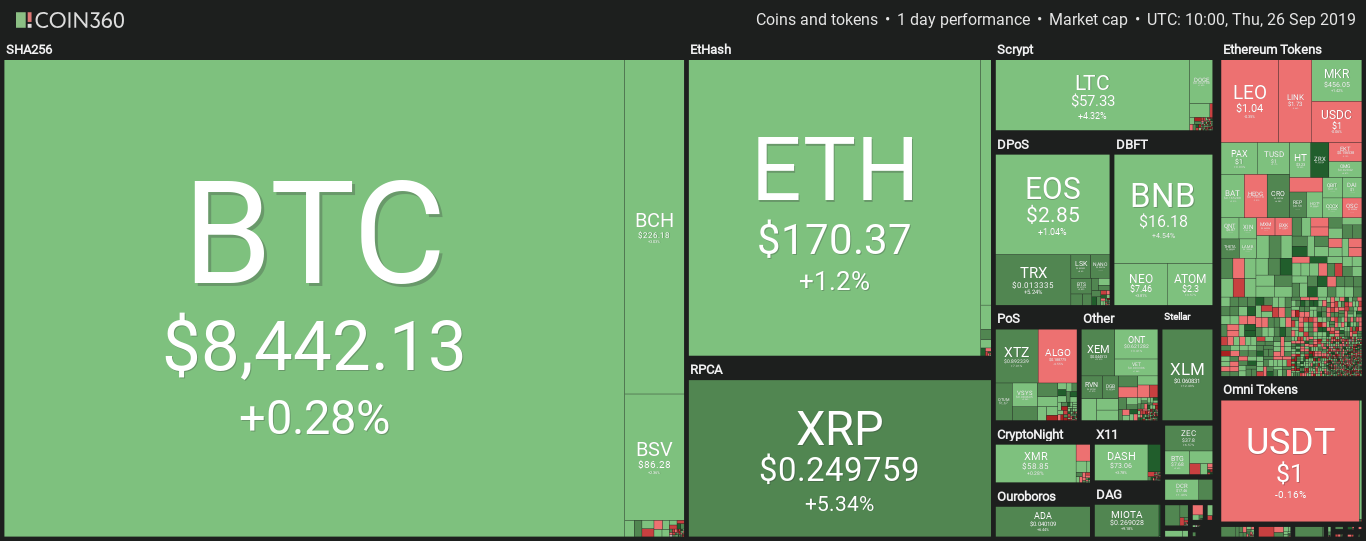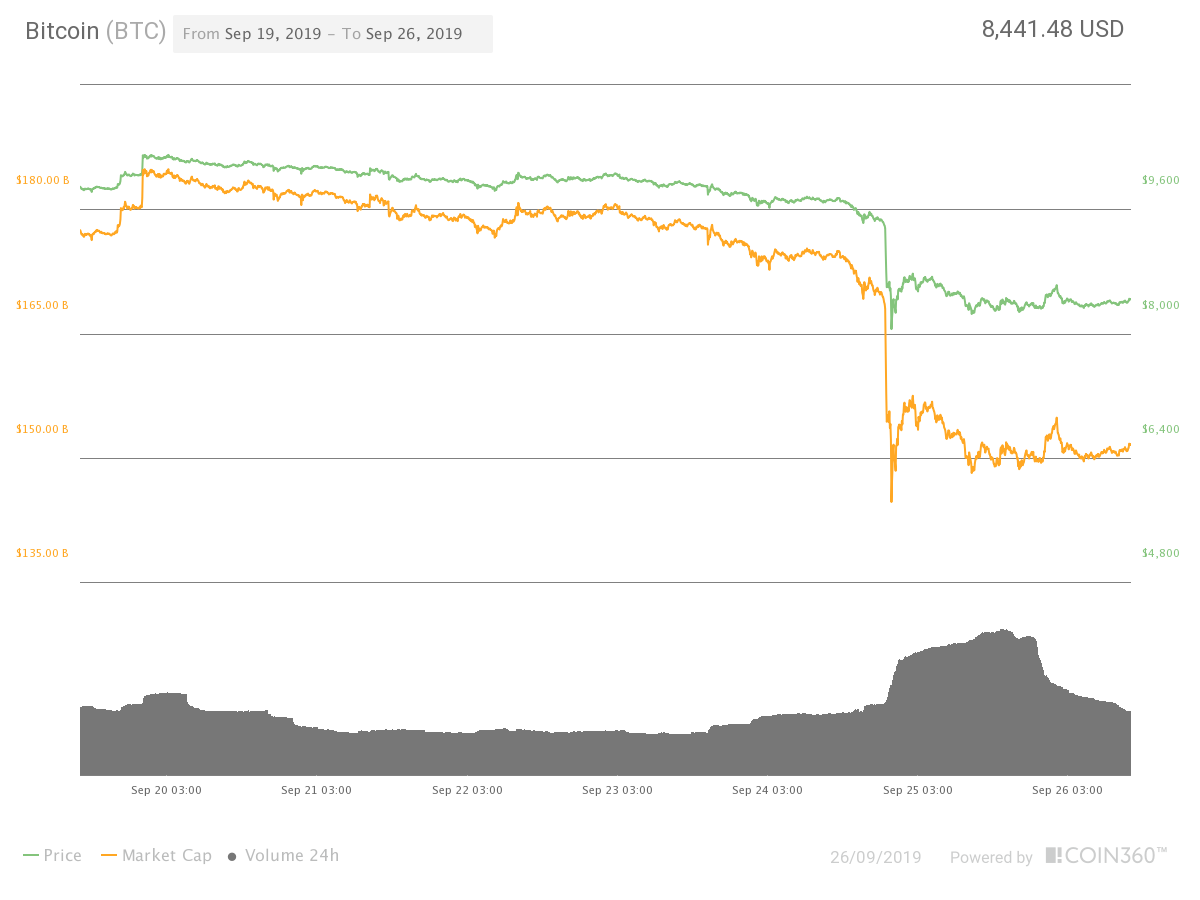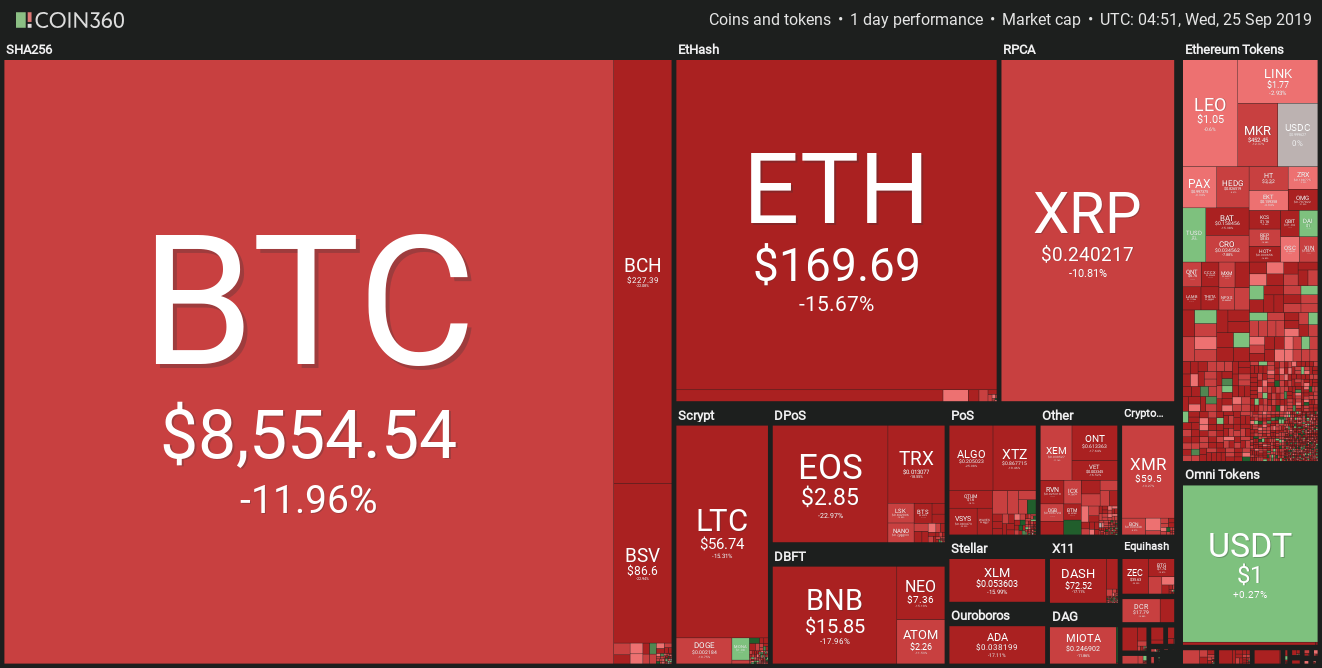The ripples of the Libra effect are beginning to lap against the shores of Europe, with French Finance Minister Bruno Le Maire suggesting that Europe should throw its hat into the ring and launch its own digital currency. Le Maire’s announcement comes at a time when EU politicians are becoming increasingly vocal about Libra and digital currencies in general.
Speaking at a meeting of EU finance ministers in Helsinki, Le Maire told journalists that he would discuss the feasibility of a European public digital currency with his counterparts in October. Charles Hoskinson, CEO of blockchain engineering startup IOHK, explained to Cointelegraph that a pan-EU digital currency would be a logical step for European politicians:
“It would make a lot of sense to create a new type of central bank with a digital currency behind it because it just it’s just simply so much more useful. It also allows government better control and tuning over tax policy. So the fact that you could create a single digital european standard of European cash and all payments go digital and then you get high fidelity with your tax policy. It’s very attractive to politicians and it’s something they’d like.”
Facebook’s stablecoin project has placed digital currencies under the spotlight in recent months, and not all of the comments have been positive. Le Maire shared his concern that Libra comes with inherent risks for consumers and even “the sovereignty of European states.”
Since their birth a decade ago, cryptocurrencies have been developed with the goal of one day replacing the current financial system. Although cryptocurrencies do not threaten sovereign states by virtue of their own existence, they do represent a financial system in which the state does not have sovereign control over all finances operating within its borders.
Although, at this current stage of cryptocurrency adoption, such an environment is extremely unlikely. If states do not have some element of control over the financial system to the extent that they are unable to gather taxes to provide essential services, it could eventually lead to a decline in stability.
One of the main characteristics of Facebook’s proposed stablecoin initiative is the potential for its 2.7 billion users to send instant cross-border payments through its platform. As it stands, cross-border payments for individuals and financial institutions alike are costly, time-consuming procedures.
Although prices vary from bank to bank, individuals seeking to transfer funds across international borders often face transaction charges, along with additional incurred losses from unfavorable exchange rates. This is particularly problematic for workers looking to send home funds earned abroad in the form of remittances. Le Maire said that the European block needs to focus on reducing the cost of cross-border payments.
Given Le Maire’s rousing comments for Europe to develop its own digital currency, it is unsurprising that he is not a supporter of Libra. Le Maire has repeatedly called for regulators to refuse Libra’s launch in the EU, stating that he plans to request guarantees from Facebook that its digital currency would not be exploited for illicit activities:
“We have to make sure that there is no risk for the consumer, it is our role as a state to protect consumers. […] It will allow Facebook to accumulate millions and millions of data again, which strengthens me in my belief that it is necessary to regulate the digital giants.”
Despite calling for an outright refusal of Libra, Le Maire said that the EU bloc needs to change its current approach to cryptocurrencies, in which regulators deliberate over whether to classify crypto as securities, payments services or currencies. A European Commission spokeswoman said that, “with the publicly available information on Libra, it is currently not possible to say which exact EU rules would apply.”
Given the regulatory uncertainty surrounding the project, Le Maire has said that France will block the project in Europe, as the “monetary sovereignty of states is at stake.” Le Maire further outlined his view that, under the current circumstances, Libra will not be permitted:
“I want to be absolutely clear: in these conditions, we cannot authorize the development of Libra on European soil.”
Thomas Heilmann, a German politician responsible for the Christian Democratic Union (CDU) blockchain initiative in Bavaria, also poured cold water on prospects for Libra approval in Europe. Heilmann said that the grand coalition had agreed “not to allow market-relevant private stablecoins.” Mr Heilmann outlined his view that the economy is well-served by central banks and that one strong digital currency could create a monopoly:
“Up to now, the economy has done a great job in countering crises and inflation with measures taken by central banks. Once a digital currency provider dominates the market, it will be quite difficult for competitors.”
Heilmann’s comments were echoed by German Vice Chancellor and Finance Minister Olaf Scholz during a discussion in Berlin on Sept. 17 in which he said that Libra will be rejected: “We cannot accept a parallel currency. […] You have to reject that clearly.”
German regulators allegedly outlined their intention to work alongside their European colleagues to ensure that stablecoins do not become a viable alternative to traditional currencies, “The Federal Government will work at European and international level to ensure that stablecoins will not become an alternative to official currencies.”
Despite these latest negative comments from politicians, Germany has a federal blockchain project aiming to develop an e-euro as a stablecoin that is administered and regulated by central banks. Hoskinson told Cointelegraph that state approach to cryptocurrency often mirrors its own specific needs and status:
“If you come from an Eastern European country, such as Ukraine, stablecoins make a lot of sense and would probably be a desirable standard over local currencies. If you come from a hegemony that tends to be in charge of things like France or Germany, your position is probably to keep the status quo.”
Fiscal power in Europe is not evenly shared, meaning that what benefits larger, typically Western countries might not be as appealing to smaller states. Consequently, Hoskinson said this is why a varied approach to cryptocurrency adoption is emerging, as smaller countries may see other benefits in the form of reduced corruption and increased market efficiencies.
Regarding the calls from European politicians to develop a single European digital currency, Hoskinson said that while it is certainly a possibility, a number of factors still stand in the way:
“For example, one or two populist right-wing states might leave the European union, so really the opposite of what [French president] Macron wants to do. Also we’re one economic collapse away from when people really start to develop a strong distaste for centralization and really want to start looking at private standards to replace the incumbent national standards.”
Libra falls under scrutiny of central banks
Perhaps aiming to alleviate some regulatory pressure, on Sept. 16, the Libra association met with 26 central banks in the form of the Committee on Payments and Market Infrastructure (CPMI), which counts the Federal Reserve and the Bank of England among its members. The event marks the first meeting between Libra representatives and global policymakers since the project’s launch on June 18.
Although the meeting could yield positive results, Benoit Coeure, a European Central Bank (ECB) executive who reportedly chaired the event in Basel, tweeted that the bar for regulatory approval in the EU would be very high. Speaking at the Bank for International Settlements (BIS) meeting, Coeure stated:
“Stablecoins are largely untested, especially on the scale required to run a global payment system. […] They give rise to a number of serious risks related to public policy priorities. The bar for regulatory approval will be high.
Echoing the comments of France’s Le Maire, Couere explained that Facebook still needs to convince regulators about the financial stability of Libra. Couere also emphasized that the project must be safe for users, citing privacy and rights ownership concerns. Although Couere said that he expects lengthy consideration, he also urged financial regulators to act fast to prepare for the project’s launch.
Calibra CEO rejects claims that Libra is a threat
Midway through the landmark meeting between Libra founders and the BIS committee, Calibra CEO David Marcus tweeted in support of the Libra Association. In a Twitter thread addressing the “monetary sovereignty of Nations vs. Libra,” Marcus sought to debunk theories that the project could be an attack on state finances:
“Libra is designed to be a better payment network and system running on top of existing currencies, and delivering meaningful value to consumers all around the world.”
Related: Libra Seen as Threat to National Currency Sovereignty, Pleads With G-7
Marcus further tweeted that the creation of new money will remain an activity strictly reserved for “the province of sovereign nations.” The executive concluded by stating that Libra will cooperate and engage with regulators to address concerns around the project. According to Gregory Klumov, CEO of the euro-pegged Stasis stablecoin, Libra does in fact threaten the monetary sovereignty of states:
“Libra could threaten the sovereignty of both the US and EU as it represents a basket of currencies that could create an imbalance/skew leading to a capital flight. No state would welcome that.”
Hoskinson explained that while the Libra project is not a direct attempt to replace the dollar as the world’s reserve currency, it certainly creates an existential crisis for prominent fiat currencies as the big four firms (GAFA), with their combined 3 billion to 4 billion customers, slowly become involved in crypto. He adds:
“That really does create an existential problem for the dollar or the euro. GAFA gets involved in stablecoins, little by little, over the edges, 20 or 30 years they’ll chip away at that dominance to the extent that we lose it.”
According to Hoskinson, powerful states such as the U.K. and France are “Taking Libra seriously because it’s just too big,” and are closely watching the experiments taking place in smaller European countries for clues on how to put together their own policy.
Switzerland could be a safe haven for Libra
In recent years, Switzerland has earned itself the reputation of being a crypto hub, thanks to an influx of crypto companies and an assertive approach to blockchain projects. While other European states may be working toward a Europe-wide digital currency, Switzerland is notable for its readiness to approve Libra within its borders.
Related: Safe Space: A Guide to Special Economic Zones for Crypto, From China to Switzerland
While many of Europe’s regulators are deliberating about how best to regulate Libra, head of the Swiss Financial Market Supervisory Authority (FINMA), Mark Branson, stated earlier in September 2019 that the project fits perfectly into their regulatory framework.
“We have just published a guide on how to classify stablecoins under Swiss law. And we show: it does not need new laws. The risks are well known, for example regarding money laundering, customer protection, system stability. There are already regulations for all of these.”
On Sept. 11, Dante Disparte, the Libra Association’s head of policy and communications, explained the decision to coordinate with Swiss regulators:
“We are engaging in constructive dialogue with FINMA and we see a feasible pathway for an open-source blockchain network to become a regulated, low-friction, high-security payment system.”
Also on Sept. 11, The FINMA published a stablecoin-focused supplement to its pre-existing guidelines for initial coin offerings. In the supplement, FINMA states that it treats stablecoins exactly the same as it does other blockchain-based tokens, placing an emphasis on “the economic function and the purpose of a token.”
Related: Facebook Libra Not Avoiding US Regulators, Switzerland a Better Fit
The watchdog also notes that an internationally coordinated approach is required due to the cross-border nature of Libra in order to establish adequate requirements for its reserve management and AML system.
Hoskinson explained that Switzerland’s surprisingly accommodating approach to cryptocurrencies is a result of an evolving financial system whereby the country needs to maintain a high revenue stream:
“After 2001, the financial system changed and Switzerland lost its ability to operate as a private secondary banking system. As a result, they’re losing a lot of their revenue streams and other jurisdictions are starting to eat their lunch.”


























































